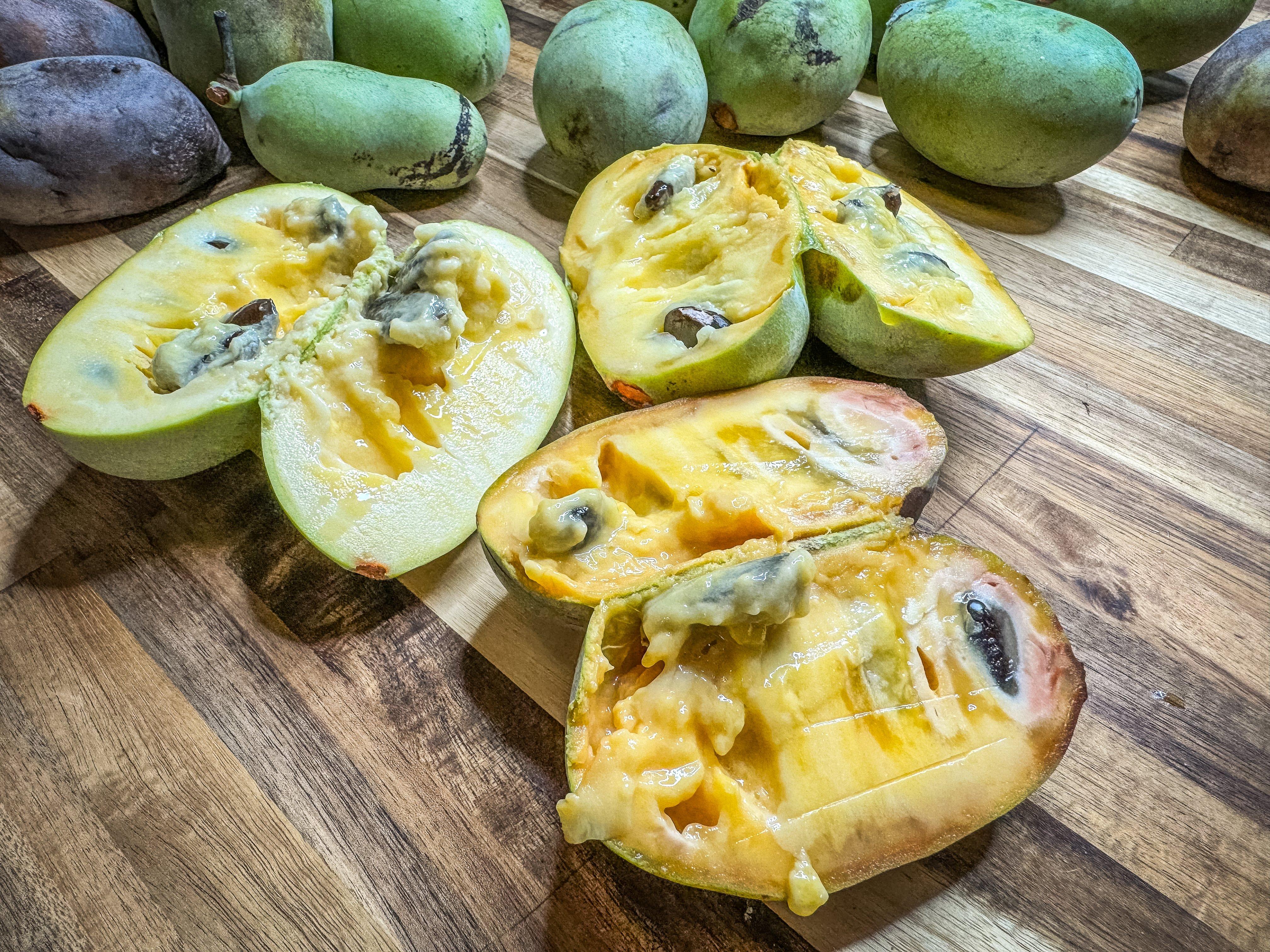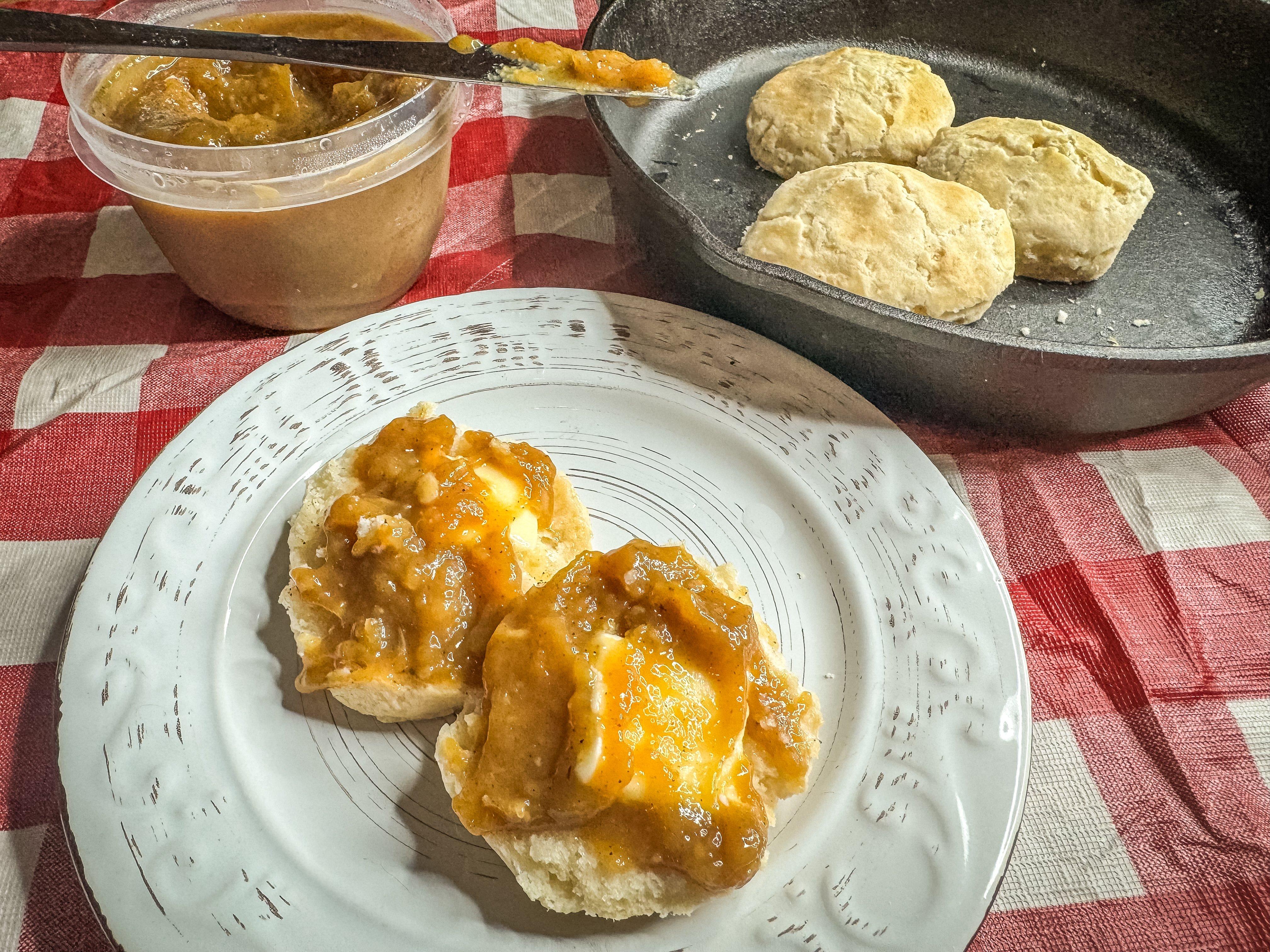North America’s largest native fruit is ripening now in most of the states east of the Mississippi. If you're lucky enough to find some growing in the woods, here’s a tasty breakfast treat you can make.
Bourbon Brown Sugar Paw Paw Butter
60 Min
Prep Time
30 Min
Cook Time
Medium
Difficulty
Paw paws are often described as the tastiest fruit you’ve never heard of. Paw paws grow wild throughout the eastern U.S., mostly in creek drainages or bottom land.

Paw paws grow wild over most of the eastern U.S. and can be found mostly along creeks and drainage areas.
They tend to prefer areas with dappled sunlight, since they are an understory tree that rarely reaches more than 40 feet tall and often tops out at half that. The leaves are large and oval shaped. If you want to forage for wild paw paws, they ripen from August in the South through October in more norther climates. Let your nose guide you. The smell from a ripening grove of paw paws is unmistakable. Like the flavor, it is a combination of banana, mango, and pineapple.

Depending on location, paw paws ripen from August through October.
The flesh of the paw paw is custardy; the fruit should be soft to a gentle squeeze when ripe. Fully ripe fruits fall from the tree naturally, and fruit that is close to ripe will fall with a gentle shake. The flesh of the fruit is packed with large seeds. Both the skin and seeds are slightly toxic to humans, so consume only the creamy flesh.

The soft flesh is packed with large seeds.
I start to process the fruits by slicing them in half. I then use a spoon or a gentle squeeze to remove the creamy flesh from the skin. Don’t get right up against the skin, as there is a bitter layer between the skin and the main pulp that causes a slight aftertaste.

Use a spoon or just squeeze the flesh to remove it from the skin.
Scoop the pulp and the seeds into a large bowl. You can separate the seeds by hand, but it is a time consuming process. A handier method comes from Appalachian Forager who has a popular YouTube channel. She puts her pulp, seeds and all, into a food processor with a plastic dough blade.

A food processor with a plastic dough blade helps to separate the seeds from the pulp.
After pulsing the pulp for a few minutes, the seeds separate from the meat of the fruit. You can then press the pulp through a strainer, leaving the seeds behind.

Push the processed pulp through a strainer, leaving the seeds behind.
Once you have about 4 cups of pulp, you are ready to make paw paw butter. Butters like this are a popular way to preserve fruits, apples in particular, for long term storage. They aren’t really butter at all, but instead are a spreadable preserve similar to jam.

Butters like this are a popular way to preserve fruit for long term storage. And they taste great on a biscuit.
You can jar and pressure can the paw paw butter to make it shelf stable, but I usually pack it into plastic containers and freeze it for future use. If you aren’t familiar with granulated pectin in the ingredient list, look for it at most supermarkets with the glass jars and canning supplies. It’s simply an insurance method to make sure your butter (or jams and jellies) set up and thicken.

Granulated pectin is an easy way to make sure your paw paw butter sets up.
You can also pack any extra pulp into zip style freezer bags and freeze for future recipes. Paw paws don’t store well, going from ripe to rotten in a few days. That is one of the main reasons they aren’t more popular as a cultivated fruit. Freezing the extra pulp when paw paws are ripe allows you to use the fruit any time you wish.
Combine the paw paw pulp, water and lemon juice in a heavy bottom pan over medium heat.

Combine the ingredients and simmer for about 40 minutes total.
Heat to boiling and cook for an additional 10 minutes. Slowly stir in remaining ingredients and reduce heat to a simmer. Cook for 30 more minutes.

The butter will darken and thicken as it cooks.
To test the butter, spoon out a small amount and turn the spoon upside down over the pot. The paw paw butter should cling to the spoon. If it does fall, it should do so as a sheet, not as individual drops. If your butter fails the spoon test, cook it a few extra minutes. The paw paw butter will thicken as it cools.
Remove the finished butter from the heat and allow it to cool. Transfer to plastic containers with a tight fitting lid. Store in the refrigerator for up to a week or two or freeze for long term storage.
Serve your paw paw butter over hot biscuits or toast like you would jam or jelly.
Ingredients
4 Cups paw paw pulp
1 Cup water
½ Cup bourbon, optional
1 Tablespoon lemon juice
1 Cup white granulated sugar
½ Cup dark brown sugar, packed
½ teaspoon Allspice
½ teaspoon cinnamon
1 teaspoon vanilla
1 Tablespoon granulated pectin








